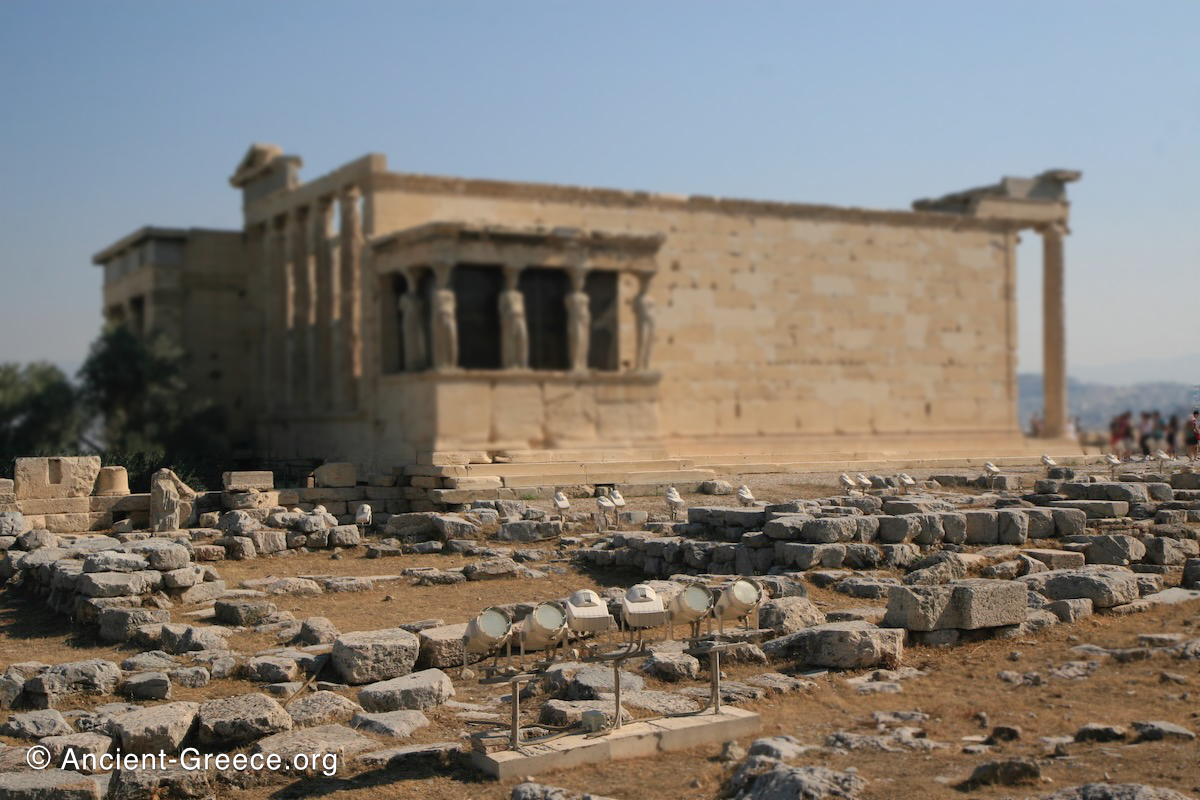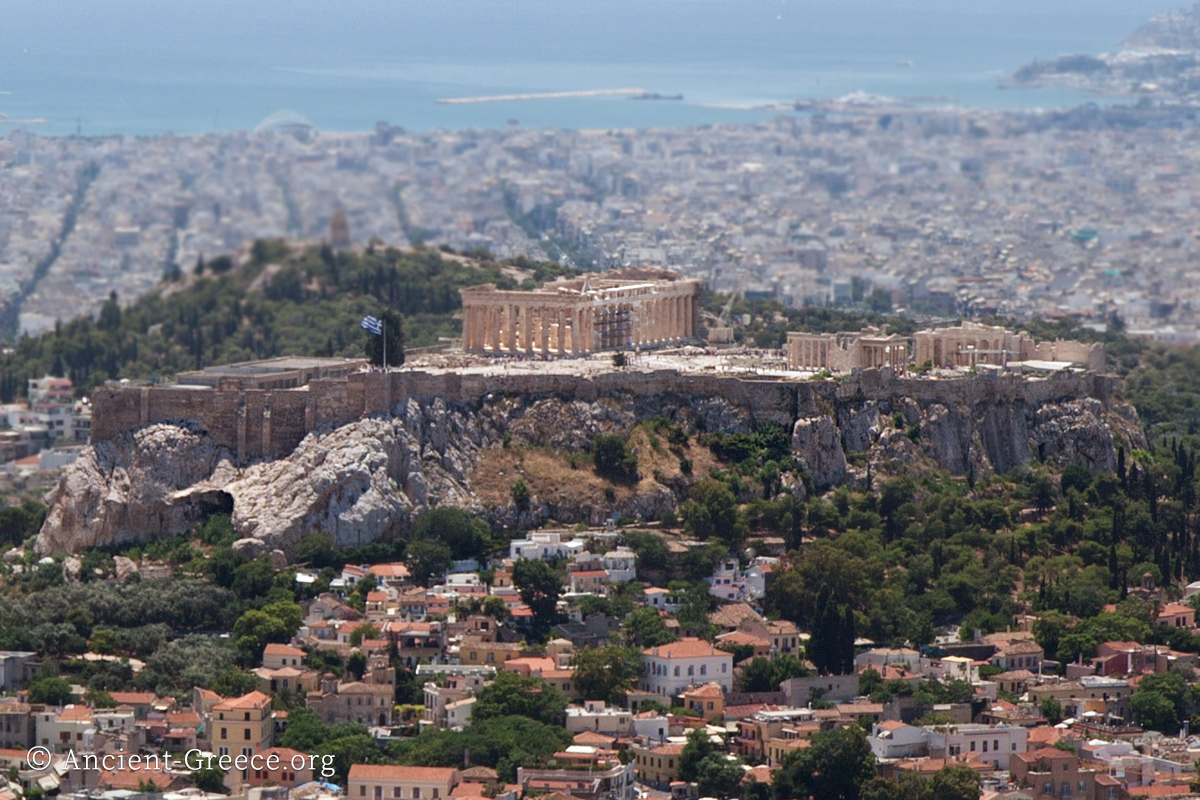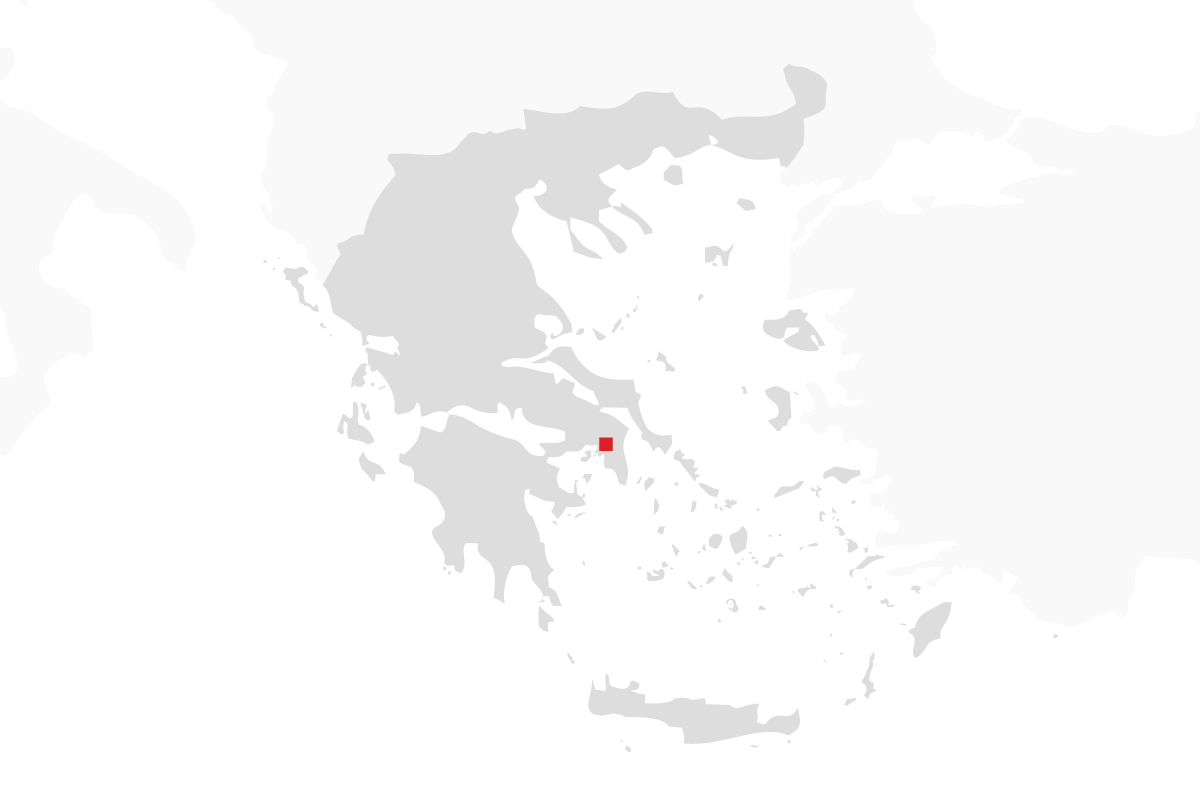
On this page:
Between the Parthenon and the Erechtheion a careful observer can make out the foundations of an old temple dating to the 6th century BCE.
With time it came to be known as the “Old Temple” for it was several times rebuilt on the spot with its origins lost in antiquity.
Temple Description
It was in this temple that the diipetes xoano of Athena resided adorned with the famed peplos until the Erechtheion was built, and it was around this temple that the cult of Athena was worshiped through the Panathenaic procession and the sacrifices and libations that took place at the altar just to the east of its entrance.
The temple was originally dedicated to Erechtheus, the mythical god whose origins are obscured in the depths of Bronze Age, and who later was replaced by the god Poseidon who according to tradition violently deposed him.
Brief History
The temple in Archaic and early classical times was shared equally by the worship of Athena Polias. From the older versions of the temple many of the decorative sculptures have survived and represent a wide time frame during which the temple was successively destroyed and rebuilt.
During the time of the Peisistratos the temple was renovated to include marble pediments — the first made of the new material. This new temple was also of the Doric order and with the exception of the marble pediment, it was built of limestone.
The sculptures of the temple depicted mythological events , a theme that remained prevalent until the classical era (Dontas).
The Old temple was rebuilt once more after the Persians demolished it in 480 BCE and it was eventually replaced permanently by the Erechtheion..





